Key Takeaways
-
Despite the excellent self-help options available today, many higher education institutions continue to offer IT support through call centers and service desks.
-
These institutions face a variety of training challenges related to computing support services, but three are quite common: effectively training new employees, providing continuous training to existing employees, and upgrading employees' knowledge and skills as new technologies and procedures are adopted.
-
Virginia Tech's training team identified and addressed each of these challenges in relation to its 4Help team, which provides both call center and service desk support for stakeholders across its academic community.
In the information age, users get technical support in multiple ways. Although IT professionals typically advocate high-quality self-service through knowledge bases or simple Google searches, many higher education institutions continue to provide IT support through call centers and service desks. When users cannot solve the problem by themselves, they contact these support facilities, expecting high-quality service that is both fast and accurate.1
Virginia Tech, a large public university, uses both an in-house information center (IC) and service desk (SD) to provide computing service to its students, parents, employees, and alumni. The IC is a call center that handles in-bound phone-based service requests. It is staffed by full-time or wage employees and provides 24/7 service. The SD provides second-tier support and handles service requests primarily from users of the IT self-service portal; it occasionally handles escalated service requests passed over from the IC. The SD is staffed by students led by a full-time employee and provides service during office hours. The two groups, known collectively as 4Help to the university community, are actually located at two different off-campus locations and are, for the most part, independently run.
4Help Training: The Status Quo
SD employees handle service requests asynchronously through ServiceNow, a cloud-based IT service management platform; in contrast, the IC must provide high-quality synchronous computing service while customers are on the phone, which can be challenging.
To effectively solve a problem over the phone, IC agents need to ask the right questions to determine both the problem's nature and the steps to solve the issue on the fly. So, they must know the answers to various questions. Once they answer those questions, they must correctly fill out and/or close the support tickets, also known as incidents, either while still on the phone or immediately after the call ends to ensure that the correct service information is entered into the IT service management system.
Because the range of IC and SD support is broad — from resetting passwords to managing guest accounts to solving Wi-Fi connection problems to dealing with compromised accounts or machines — it is imperative that IC and SD agents master numerous service topics. Moreover, given the continuous adoption of and upgrade to new technologies and procedures, 4Help employees must also upgrade their skills frequently and be informed about and trained on university-supported products and services.2 Noted one new employee, "The course for training in Canvas was very helpful and pertained to the most common everyday task that would be faced on daily basis."
Over the years, we have established programs to provide necessary training to the 4Help employees. For the IC, we offer weekly face-to-face training to all agents. We also set up an online new-employee training course in the university's learning management system (LMS). For the SD, we set up a separate online training course in the LMS. SD's student hires are also trained face-to-face for new technological or procedural updates, but with much less frequency than the IC's weekly training schedule.
Training Problems and Solutions
Our existing training programs have been successful: IC employees can handle an increasingly larger variety of service requests rather than simply passing them to the second-tier SD, while the SD can effectively address at least 95 percent of the reported issues (estimated by the number of closed incidents compared to the number of total incidents). However, as I now describe, 4Help nonetheless faces many training challenges that required creative solutions.
High Turnover
The first challenge is 4Help's relatively high turnover rate. Last year, five IC employees left, and this year, eight SD students will graduate — accounting for one third and one half of the IC and SD hires, respectively. Thus, we must determine how to train new hires effectively within a short time so they can help our customers. And, as one new employee admitted, "It was very helpful to find my ways to 'how to dos' specially when new employees don’t want to bother their supervisor for every question they have."
To address this challenge, we modified the IC's existing online training for new employees. In addition to the 12 existing training modules, we added two new modules, covering topics such as Information Center Expectations, Phone Instructions, Password Resets, Procedures, VT Wireless Access, and so on. More importantly, we added assessment items, checklists, and activities to the end of each module. These additions not only enhance employees' training experience but also make them accountable for their learning results. In the past, when we presented only training materials, it was difficult to assess whether employees had mastered the knowledge or skills. Supervisors had said that even after training, some employees frequently continued asking questions about issues covered in the training, indicating a lack of knowledge and understanding.
Now, employees need to perform tasks to practice the material presented in each module. For example, after reviewing the "How to Use the Phone" module, new employees are asked to work with a more experienced employee or a supervisor to finish a series of tasks, including logging in to the phone; placing the phone in a work-ready state, break mode, or training mode; answering a call; and transferring a call to ensure that they can execute the tasks (see figure 1).
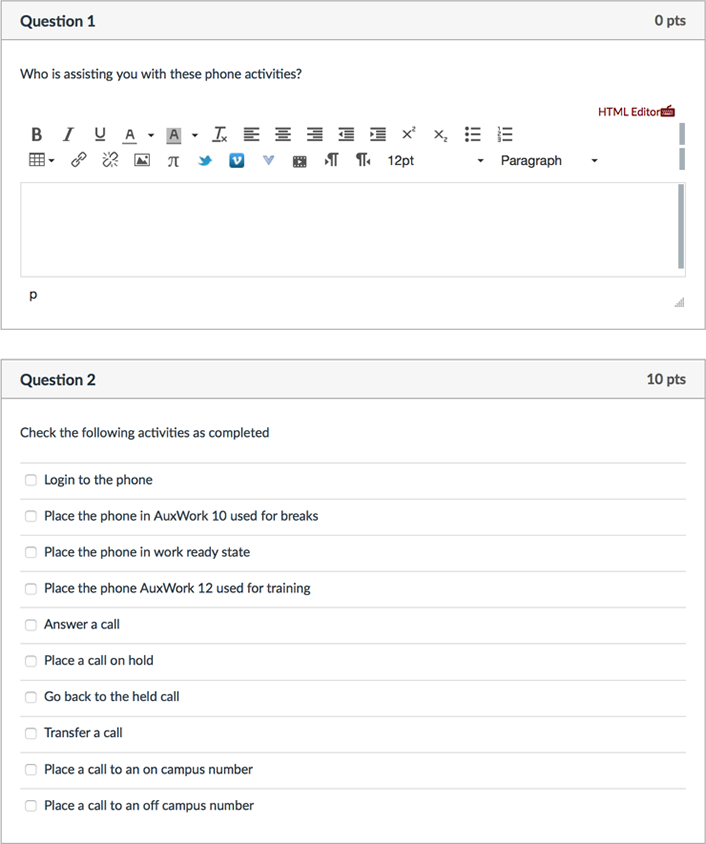
Figure 1. Integrating offline activities to practice skills learned from online training
We provide the checklist so that trainees can check off the activities completed and provide the name of the employee who helped them with the tasks. This adds accountability: new employees must demonstrate full mastery of tasks rather than simply going through the training materials without knowing whether they actually understand them or can do the required tasks. This also lets training team members and supervisors monitor a new employee's progress and discover the gaps so that they can be filled. Said IC Supervisor Michael Hodge:
"I love the new hire training modules. It gives our new agents a chance to see what their everyday calls will look like when they start taking calls. It gives them a place to revisit the materials as needed to enhance their knowledge on weak issues."
Figure 2 shows a question that establishes the employee's accountability for reviewing the training materials.
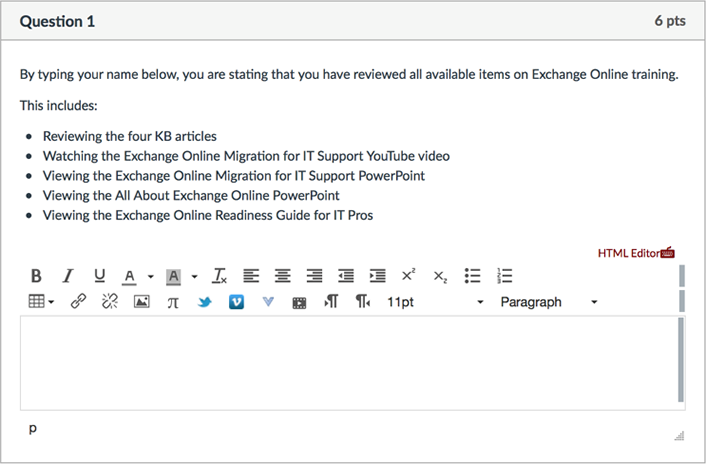
Figure 2. Quiz question designed to enhance employee’s accountability
Retraining
A second challenge is the need to retrain existing 4Help employees. IC supervisors indicated that many of the training topics need periodic refreshing to ensure that the agents know how to find answers for and solve the problems. However, they didn't know which topics required retraining, and how often. As a result, supervisors training the IC agents often chose the training topics without purposeful planning.
To tackle this challenge, the training team worked with the IC supervisors to identify training topics and their ideal delivery frequency within a year's time. We identified 24 topics to cover quarterly, four topics to cover biannually, and seven topics to cover annually.
Further, we prioritized the topics by importance. Ties were allowed, because some topics are related and equally important, and they cannot be covered in one training session. Next, we identified important events that recur annually — such as student admission, student orientation, and the start of school in the fall — because those events often create numerous service requests in specific areas. With these events in mind, we identified necessary trainings required to prepare employees. We then designed a yearly training schedule and arranged topics for each week.
Depending on how long a subject takes to cover, some weeks might include multiple training topics. By the end of the first quarter, we had planned training topics for the first half of the year. Doing this reduces IC supervisors' stress about choosing training topics; it also targets the topics to actual operational needs. So, rather than struggling with which topics to train on, they can focus on preparing for the trainings.
Just-in-Time Training
As mentioned, we must provide just-in-time training on short notice to upgrade 4Help employees' knowledge and skills in the face of technological and procedural upgrades. For the first quarter of 2017, we added five new training topics in response to upgrades. This just-in-time training is especially important for campus-wide technological upgrades or new technology rollouts.
We also asked to be informed about technological and procedural upgrades once they are known about, even if not yet scheduled, so that we can plan for training in preparation for the changes. Additionally, we use a collaborative approach to develop new training for new technology or procedures.
Unlike the existing training topics, which are developed by our internal training team, the technological or procedural upgrades are often initiated by other university IT organizations, which are typically the ultimate service providers or service owners. Personnel in those units are the subject matter experts (SMEs) for the specific products or services, not the training team. Therefore, to provide the best training possible for 4Help employees, our training team collaborates with the service provider or service owner to design and deliver the training. This ensures that comprehensive and accurate information is provided in the most instructionally sound way to achieve the best training results.
Results
Our team collected anecdotes to demonstrate the results of our solutions for both the new-employee onboarding training and the continuous training to existing employees.
In March 2017, two new employees joined the IC. They used our revised new-employee training course. Feedback from both employees and their supervisors indicated that they found the new training course helpful in getting new employees appropriately trained in a short time: in the past, it took a month to train a new employee, whereas a new employee is now trained in two to three weeks. The integrated activities, checklists, and quizzes structured the practice requirements and expectations. They also made it easy to monitor the new employees' progress and ensure they mastered the knowledge and skills in preparation for their first calls.
For continuous training, our planned training schedule helped supervisors prepare for weekly training. This contrasts to the past, where supervisors struggled to choose topics and worried about whether they had adequately trained employees in preparation for important events, or whether they had covered key topics frequently enough for high-volume calls. IC Supervisor Jennifer Gay noted:
"The new employee training through Canvas has been an innovation for training new employees on the basic skills and job responsibilities for doing customer service in the Virginia Tech Information Center. The training incorporates all three approaches to learning: reading the material, having a trainer go over the material and answer any questions that may arise, and hands-on. The creation of displays and diagrams assists in the learning process and the quizzes challenge the user. This is a new addition to Virginia Tech which has only enhanced our ability to educate people in the method that works best for each individual person."
Technological and procedural changes cannot be anticipated as easily as other training topics. However, the collaborative approach lets us access SMEs and quickly develop new training materials that are beyond the training team's expertise. For example, Virginia Tech is currently migrating from the existing on-premises Microsoft Exchange service to a cloud-based Exchange Online service. This campus-wide migration began May 1, 2017; we were aware of the schedule approximately 10 days before the rollout. By collaborating with the service owner, we were able to provide a comprehensive online training to the IC employees equivalent to about two face-to-face hours.
Figure 3 shows a screen from the Exchange Online training. It also demonstrates our collaboration with external SMEs to provide just-in-time training to employees. Figure 4 shows an Exchange Online training screen for migration of IT support. It exemplifies training design that aims to provide assistance to employees so that they can use their time efficiently.
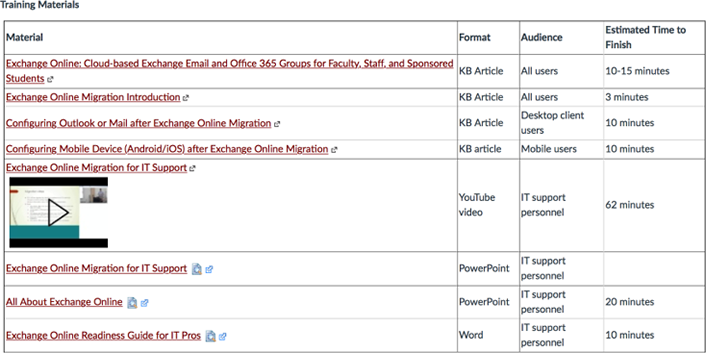
Figure 3. Screen capture of the Exchange Online training module
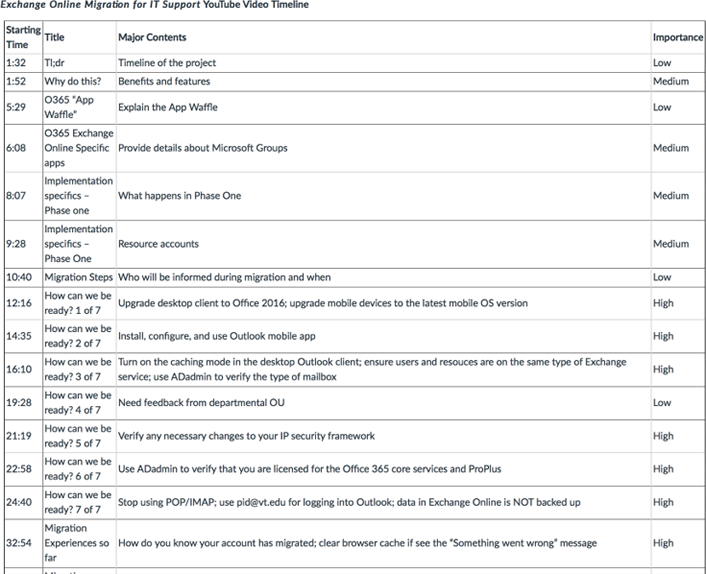
Figure 4. The Exchange Online training module for online migration of IT support
Discussion: New Challenges
Looking forward, we face some unresolved issues and new challenges in 4Help employee training. For example, in summer 2017, the IC and SD will merge, both physically and operationally. We must therefore cross-train all 4Help employees so that they are proficient in and prepared to address both IC and SD problems.
Also, in the process of addressing the continuous training challenge we found that, after scheduling six months' worth of weekly training topics, most of the training topics that have been identified for quarterly delivery can be covered only twice a year. To explain: We identified 24 topics to cover quarterly, most of which need one training session. Each quarter has 12–13 weeks, meaning we can't cover all 24 topics. In addition, during the flu season, a lot of employees got sick one week, so we had to cancel training for that week. These factors limit our provision of training to certain time periods and frequencies.
To address this timing issue, we are looking into using a blended learning approach, moving most of the topics to online delivery and using the face-to-face time for hands-on and role-playing activities that can actively engage employees and allow them to practice in a safe environment without serious business consequences. This approach will also let supervisors monitor and facilitate the skill-gaining process and correct any incorrect behaviors. Moving the basic training online affords flexibility for the employees, supervisors, and training team in providing the more difficult training topics.
Finally, we plan to use operational data to drive our decision-making process. We pulled the service requests data for the past 12 months using the established categories from the IT service management platform and found that 80 percent of the service requests were related to just 20 percent of the service topics (see Figure 5). Using this data will allow us to prioritize our work and achieve the best return on time invested in training.
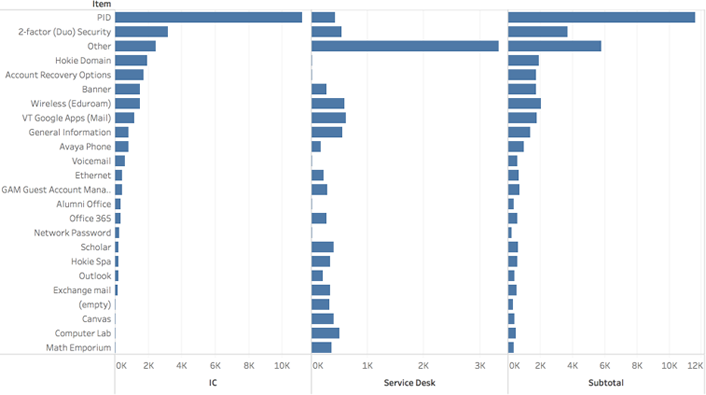
Figure 5. Virginia Tech 4Help service requests over the past 12 months (data reported March 30, 2017)
Conclusion
Although higher education institutions may face different training challenges related to computing services, the three challenges I discuss here — how to effectively train new employees, provide continuous training to existing employees, and upgrade employees' knowledge and skills as new technologies and procedures are adopted — are quite common across institutions. Our training team has achieved some success in addressing these training challenges; we hope our experiences can provide valuable insights to our peers in other institutions.
Acknowledgment
A special thanks to Teresa Snavely for providing some of the information used in this article.
Notes
- Susan J. Campbell, "Why Call Center Management Should Focus on the Quality Knowledge Base," Call Center Management, August 20, 2103.
- Marco Adria and Shamsud D. Chowdhury, "Making Room for the Call Center," Information System Management, Vol. 19, No. 1 (2002): 7180.
Deyu Hu, PhD, is associate director of Training, Research, and Special Initiatives, IT Experience and Engagement, Division of Information Technology, and chair, Commission of Equal Opportunity and Diversity, Virginia Tech.
© 2017 Deyu Hu. The text of this article is licensed under the Creative Commons BY-NC-ND 4.0 license.
